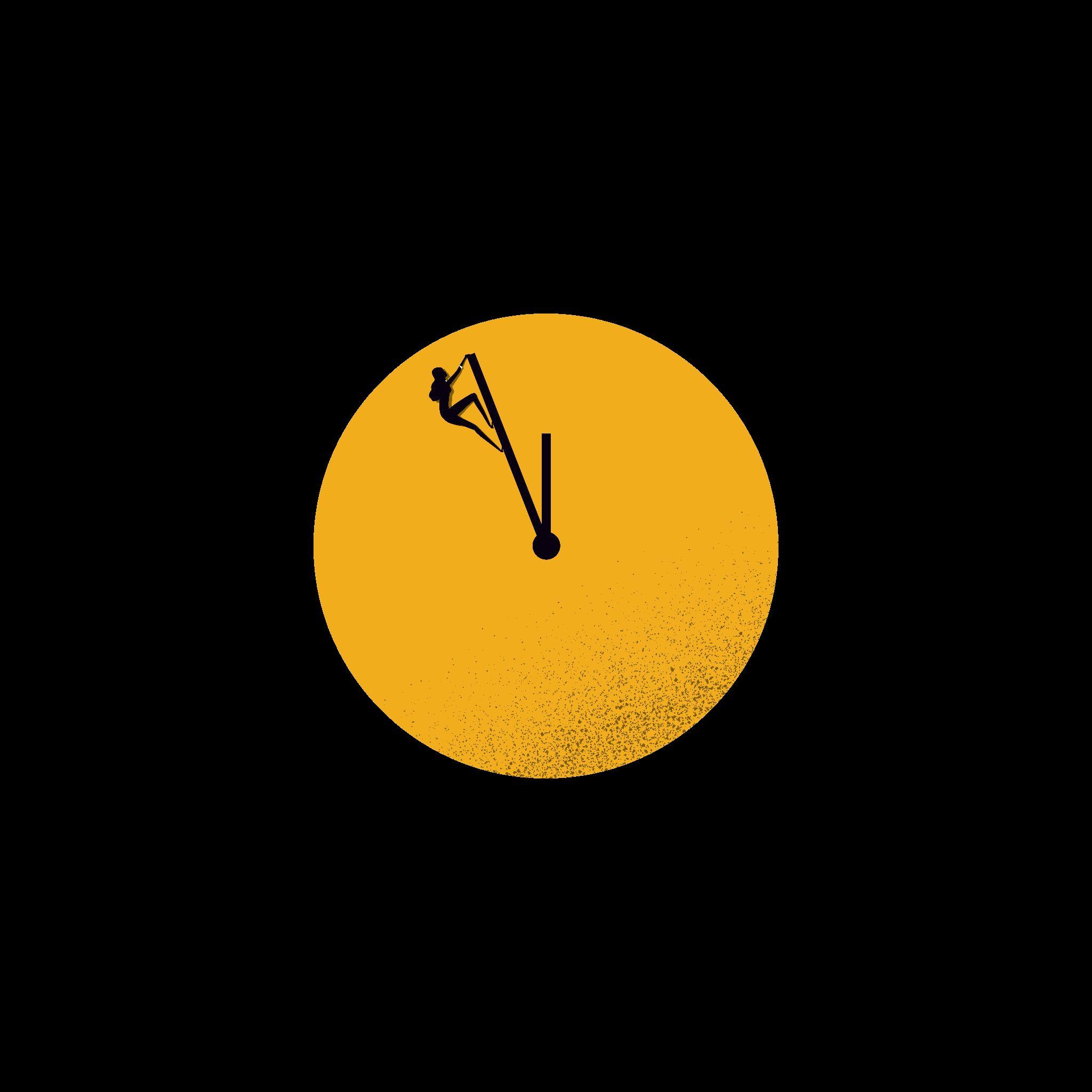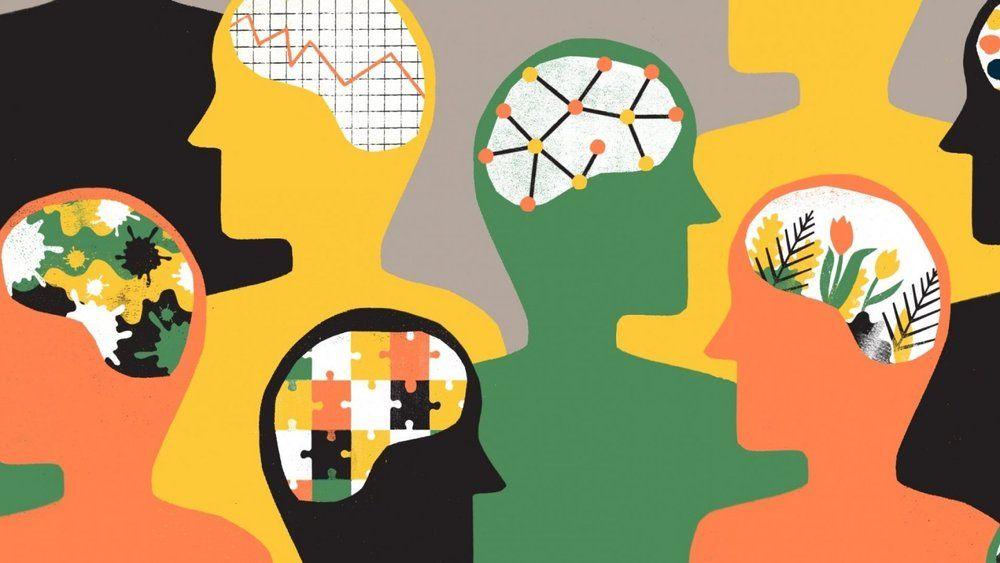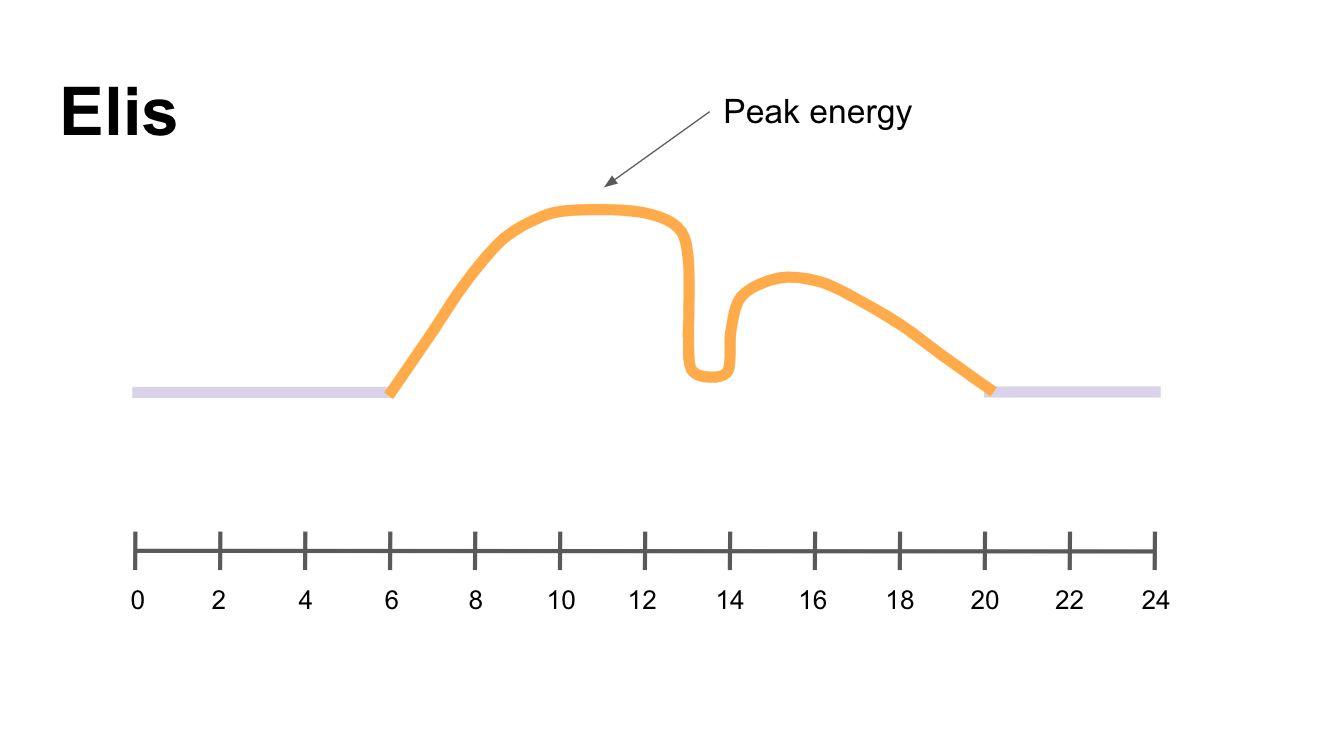Leveraging time diversity to unlock organizational potential
Elis Shin, Joana Chang, and Sebastian Muñoz Awad
MS Strategic Design and Management Capstone
Parsons School of Design, Spring 2023

Elis Shin, Joana Chang, and Sebastian Muñoz Awad
MS Strategic Design and Management Capstone
Parsons School of Design, Spring 2023
Only 33% of employees feel engaged in their jobs
Gallup, 2022
50.5 M people quit their jobs in 2022
U.S. Dept. of Labor, 2023
60% of people are not highly alert in the morning
Putilov et al, 2021
2 hrs is the extra time burden on women at home
U.S. Dept. of Labor, 2022
3 hrs
the time disadvantage of families with children
Kalenkoski, 2011
Employees working onsite five days a week are
15% less engaged
Gallup, 2023
Companies with flexible work arrangements are
23% more profitable
Gallup, 2022
When employees have an intersectional understanding of time, work time is more inclusive, employees are more engaged and effective at their work, and companies are more profitable and productive.
Time diverse organizations consider how an employee’s personal traits influence their time perspective.

Chronotypes are linked to biological predispositions. The optimal time for certain activities or rest depends on the time of day when an employee’s energy is the highest.

Research shows that the way people schedule activities deeply influences their happiness. Empowering employees to practice agency at work boosts engagement.

Personal characteristics, work and non-work commitments, and life decisions influence how employee experience time.




















We saw that people rely too much on intuition when making decisions about time and need data to see if their assumptions are on track.
We heard that people want their organizations to make space for difference and recognize that people have different expectations for work time.
We learned that people are not inclined to talk about the traits that influence how they experience time, especially in remote workplaces.

It’s important to know yourself and your team to find more eective ways to collaborate and co-design your time to work.
It all starts with you!
Complete my profile



My ideal week
My rules
Name: Sebastián Muñoz

Role: Monetization
Teams: Squads:
Innovation Manager - IC Innovation

Direct reports:
None Leader: Chief Innovation Officer
Primary time zone: Eastern Standard Time















What team are you working with today?

These are your saved teams:












Time zones
All your team is based on Eastern Standard Time. Great news!

You’ll be able to coordinate time faster.

The best time for collaboration is between 10-12 am everyday.


Afternoons. 3 people in your team are morning types and with dierent energy paerns in the afternoons.
Flexible time
Everyone has moments of flexibility, and most of them are around the afternoon. Communication is key.


There is a team member that needs to rest during the day to avoid headaches caused by fatigue.
Home My profile My time My teams Insights

Learning resources
What’s chronic fatigue?
Best tasks for peak energy
Best tasks for energy recovery

Elis Shin elis@newschool.edu
Joana Chang joana.chang@newschool.edu


Sebastian Muñoz Awad sebastian.ma@newschool.edu

Bureau of Labor Statistics, U.S. Department of Labor. (2022) “AmericanTime Use Survey Summary.” USDL-22-1261. https://www.bls.gov/news.release/atus.nr0.htm
Bureau of Labor Statistics, U.S. Department of Labor. (2023) “Job Openings and LaborTurnover Survey” USDL-23-0628. https://www.bls.gov/news.release/archives/jolts_04042023.pdf
Clifton, J., Harper, J. Culture Shock. (2023)The Gallup Organization: Washington, D.C. (excerpt) https://www.gallup.com/workplace/401738/coordinating-hybrid-work-schedules-5-important-findings.aspx
Cole, M. S., Bruch, H., and Vogel, B. (2011, May 27). “Energy at work:Ameasurement validation and linkage to unit effectiveness.” Journal of Organizational Behavior, 33 (4), 445–467. https://doi.org/10.1002/job.759
Eteläpelto,A., Vähäsantanen, K., Hökkä, P., and Paloniemi, S. (2013). “What is agency? Conceptualizing professional agency at work.” Educational Research Review, 10, 45–65. https://doi.org/10.1016/j.edurev.2013.05.001
The Gallup Organization. (2022) “State of the Global Workplace 2022 Report.” Washington, D.C. https://www.gallup.com/workplace/349484/state-of-the-global-workplace.aspx
The Gallup Organization. (2020) “The Relationship Between Engagement at Work and Organizational Outcomes.” Washington, D.C. https://www.gallup.com/workplace/321725/gallup-q12-meta-analysis-report.aspx
Kalenkoski, C.M., Hamrick, K.S., andAndrews, M. (2011). “Time poverty thresholds and rates for the US population.” Social Indicators Research, 104 (1), 129–55. https://doi.org/10.1007/s11205-010-9732-2
Putilov,A.A., Sveshnikov, D. S., Puchkova,A. N., Dorokhov, V. B., Bakaeva, Z. B.,Yakunina, E. B., Starshinov,Y. P.,Torshin, V. I.,Alipov, N. N., Sergeeva, O. V.,Trutneva, E.A., Lapkin, M. M., Lopatskaya, Z. N., Budkevich, R. O., Budkevich, E. V., Dyakovich, M. P., Donskaya, O. G., Plusnin, J. M., Delwiche, B., … Mairesse, O. (2021). “Single-item chronotyping (sic), a method to self-assess diurnal types by using 6 simple charts.” Personality and Individual Differences, 168, 110353. https://doi.org/10.1016/j.paid.2020.110353
Sellier,A. L., andAvnet,T. (2014). “So What If the Clock Strikes? Scheduling Style, Control, and Well-Being.” Journal of Personality and Social Psychology, 107 (5), 791–808. http://dx.doi.org/10.1037/a0038051
Vogel, B., Raes,A. M., and Bruch, H. (2022, December). “Mapping and managing productive organizational energy over time:The Energy Pattern Explorer tool.” Long Range Planning, 55 (6), 102213. https://doi.org/10.1016/j.lrp.2022.102213
Volk, S., Pearsall, M. J., Christian, M. D., and Becker, W. E. (2017). “Chronotype Diversity inTeams:Toward aTheory ofTeam EnergeticAsynchrony.” Academy of Management Review, 42 (4), 683–702. https://doi.org/10.5465/amr.2015.018